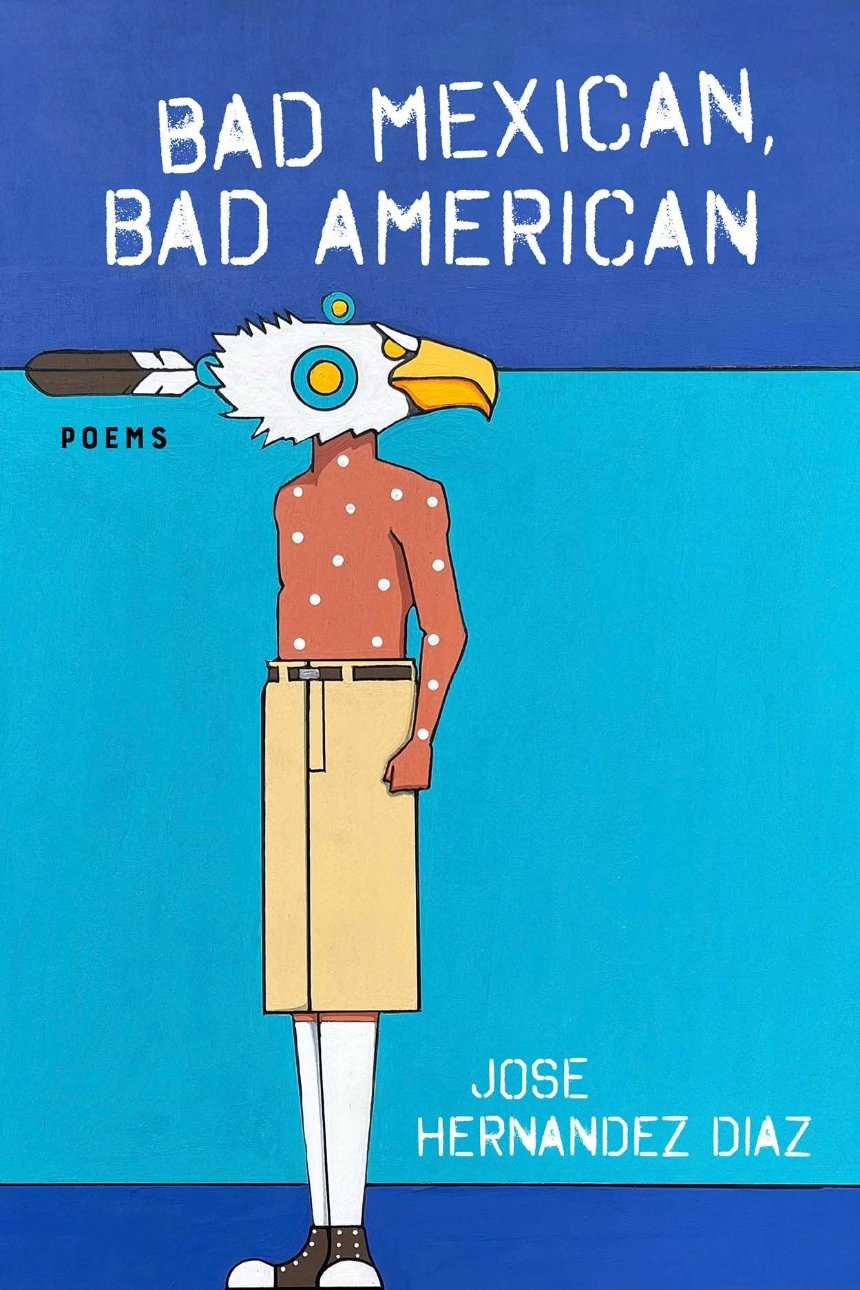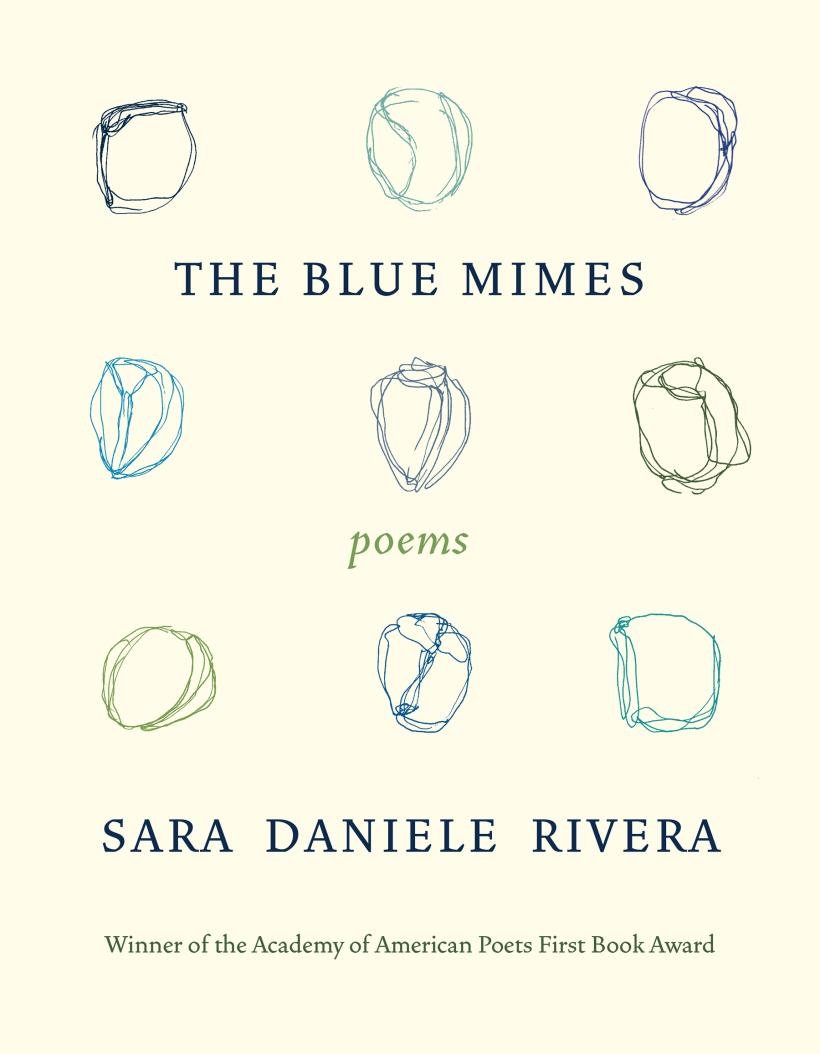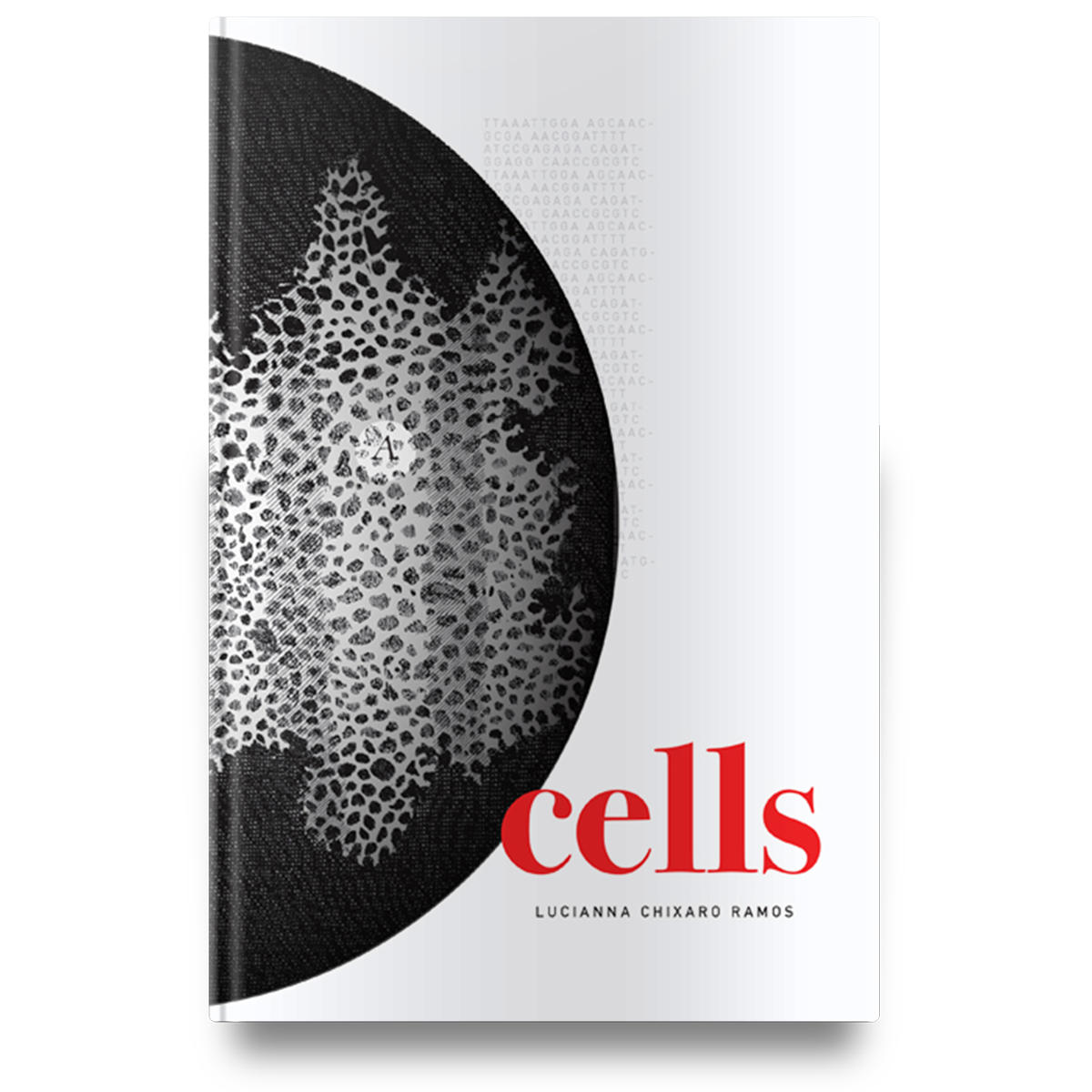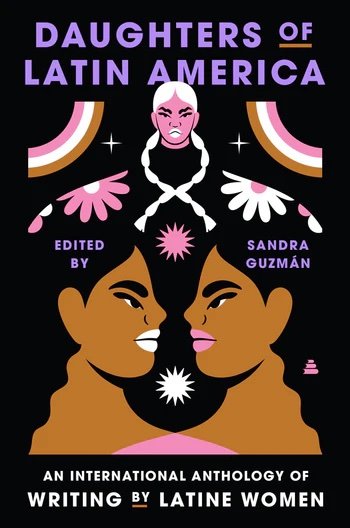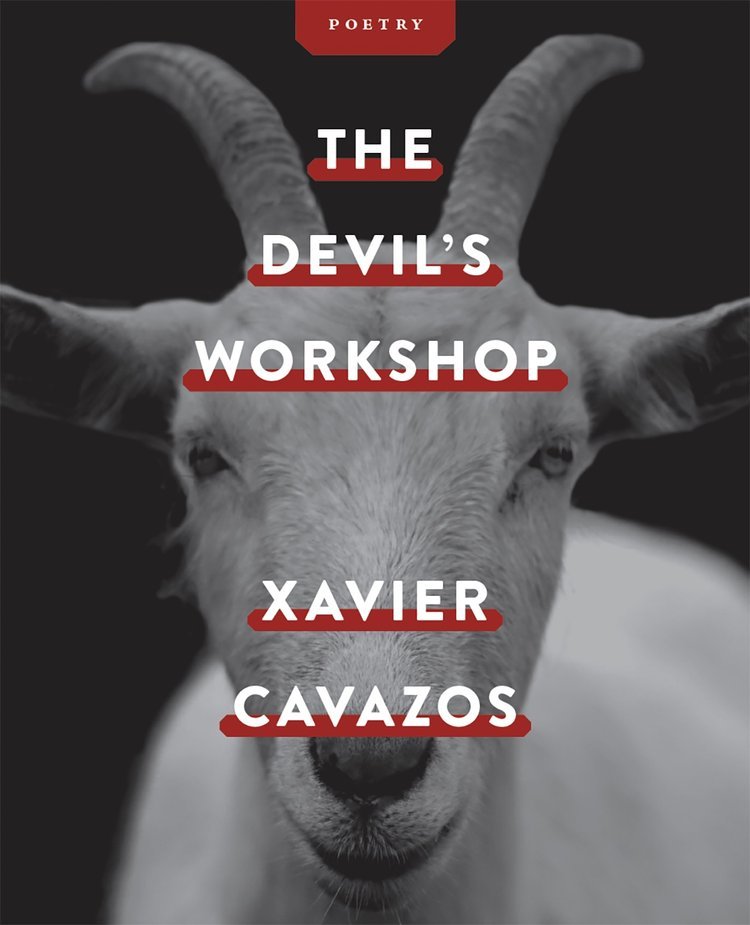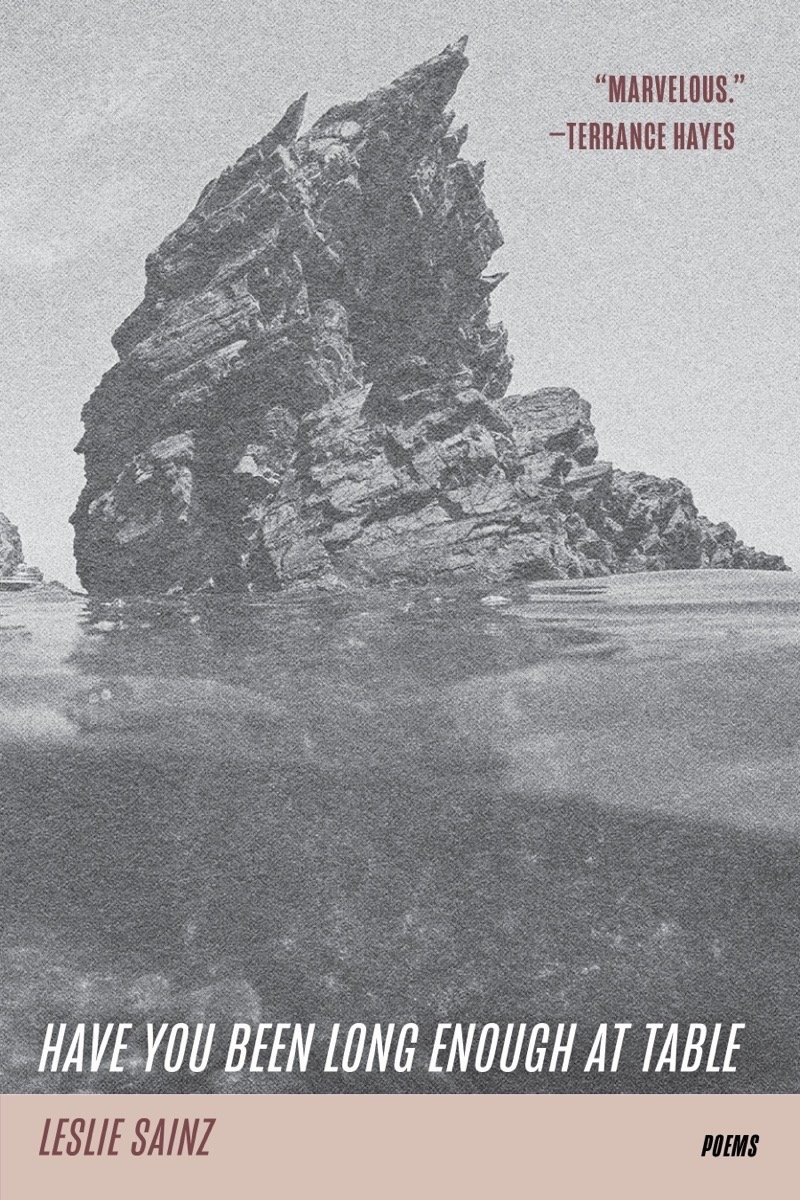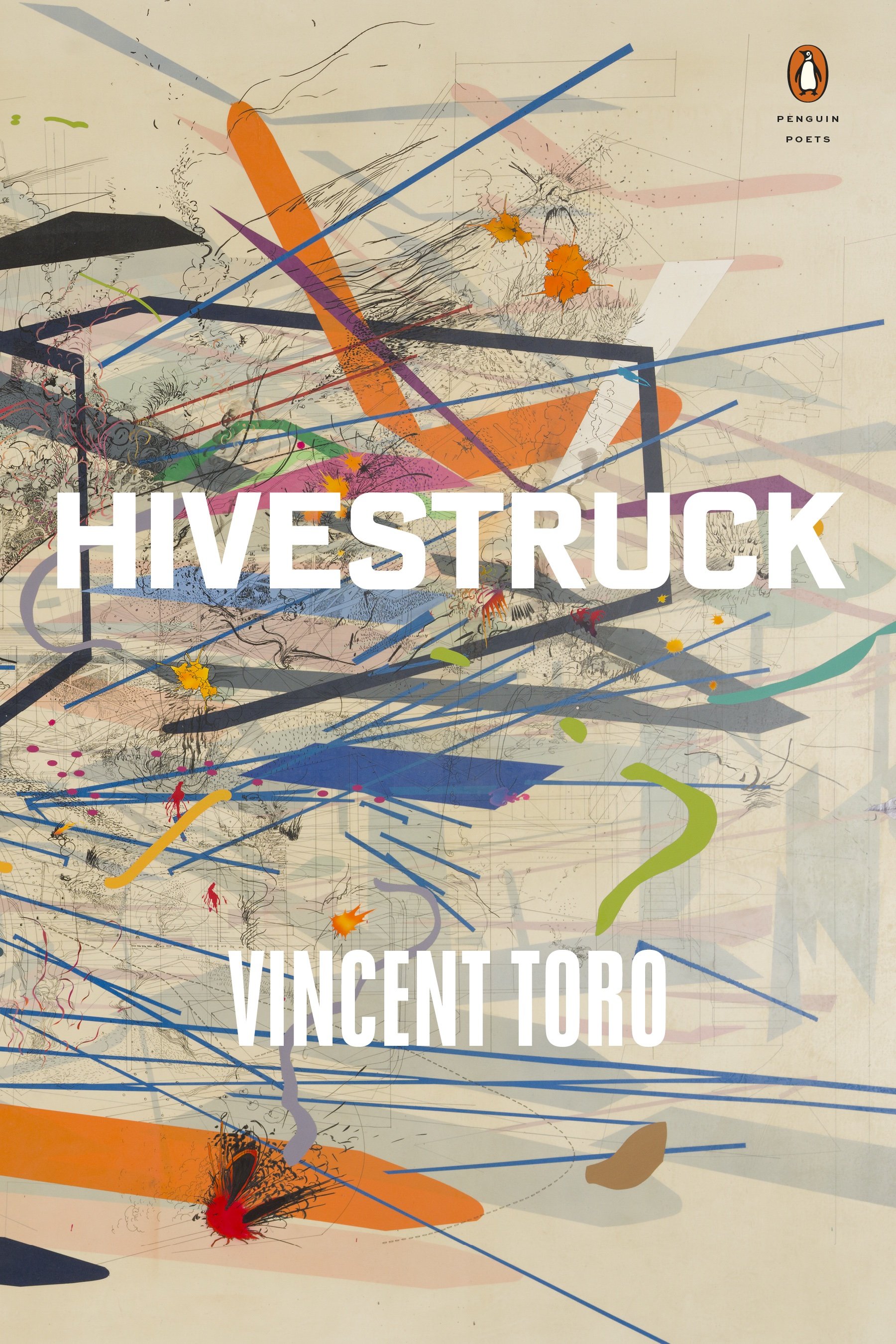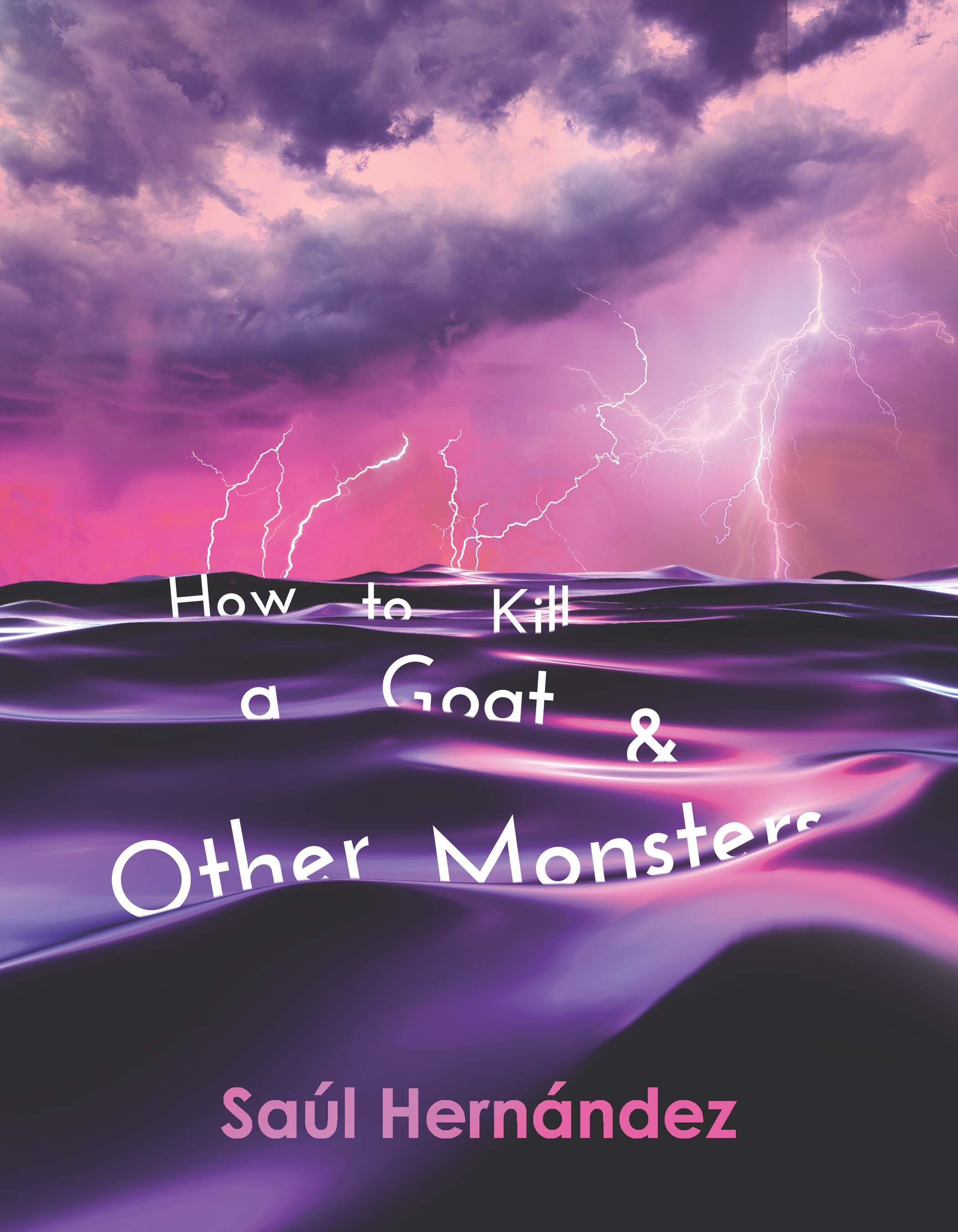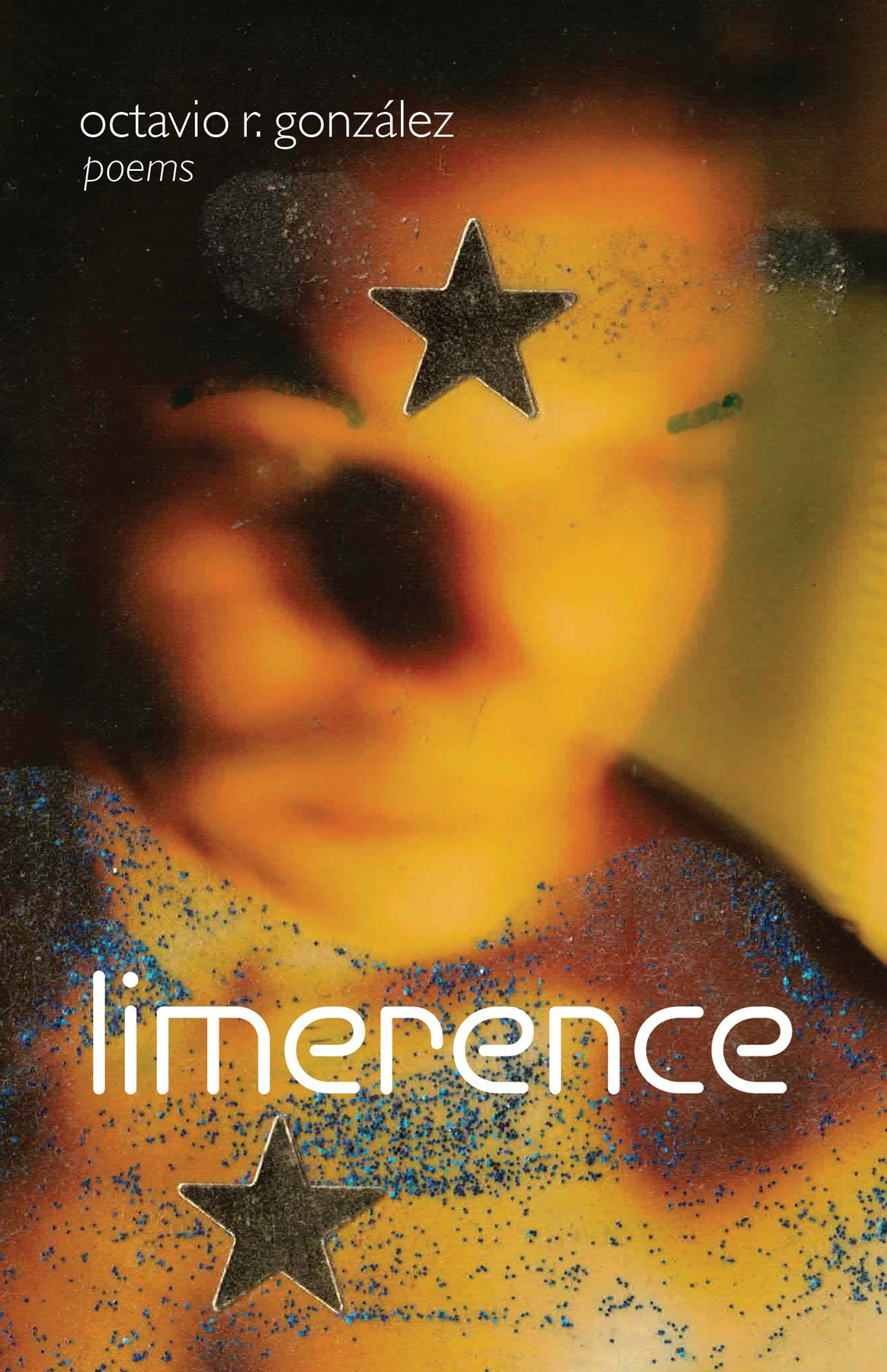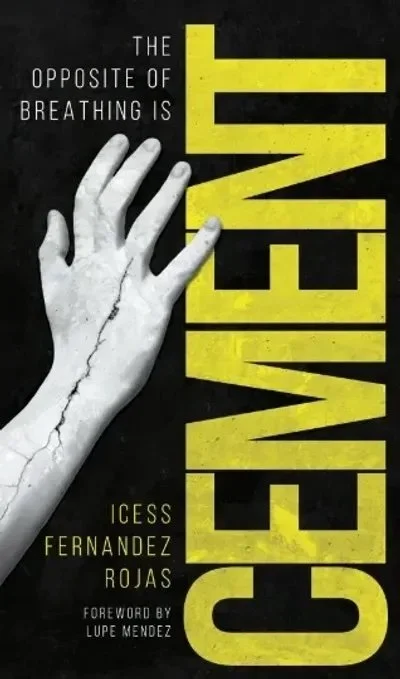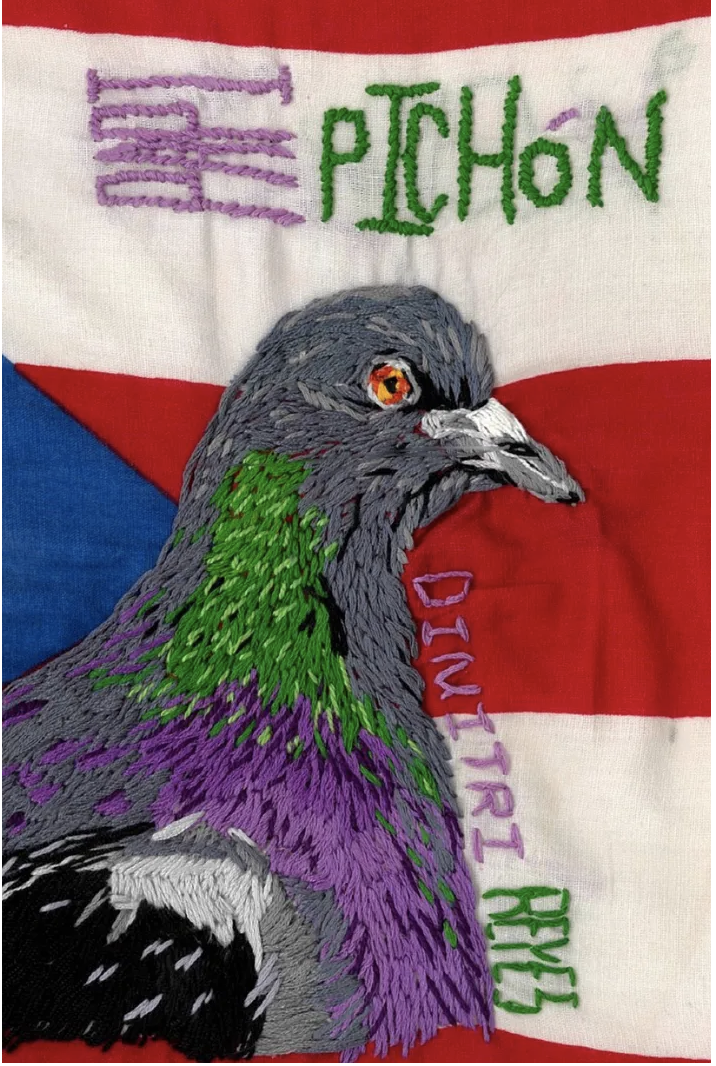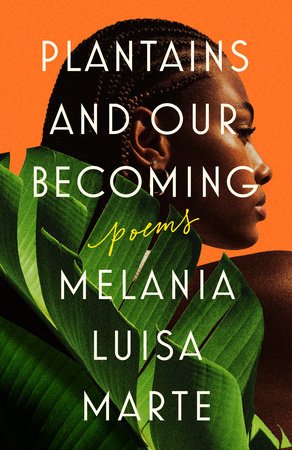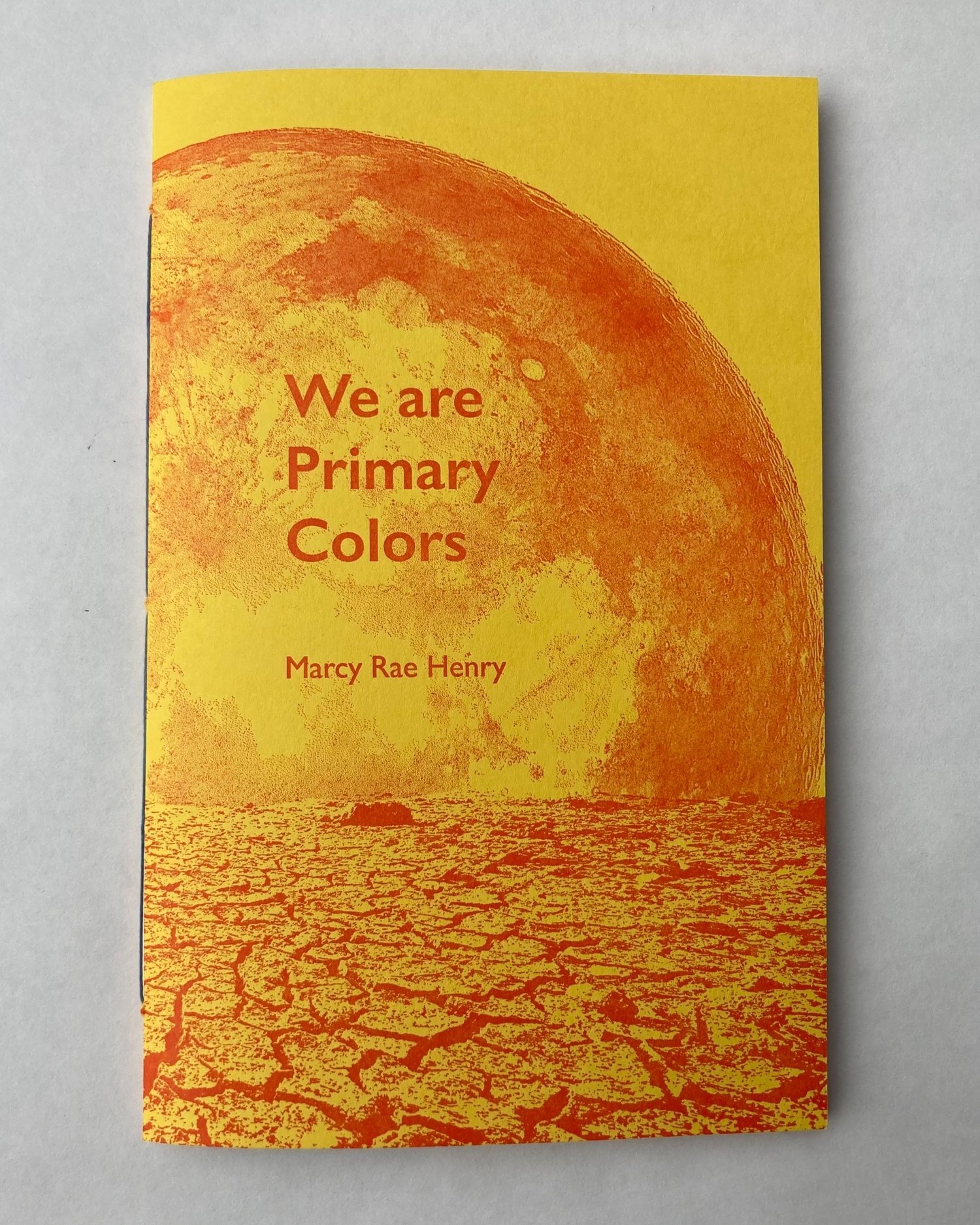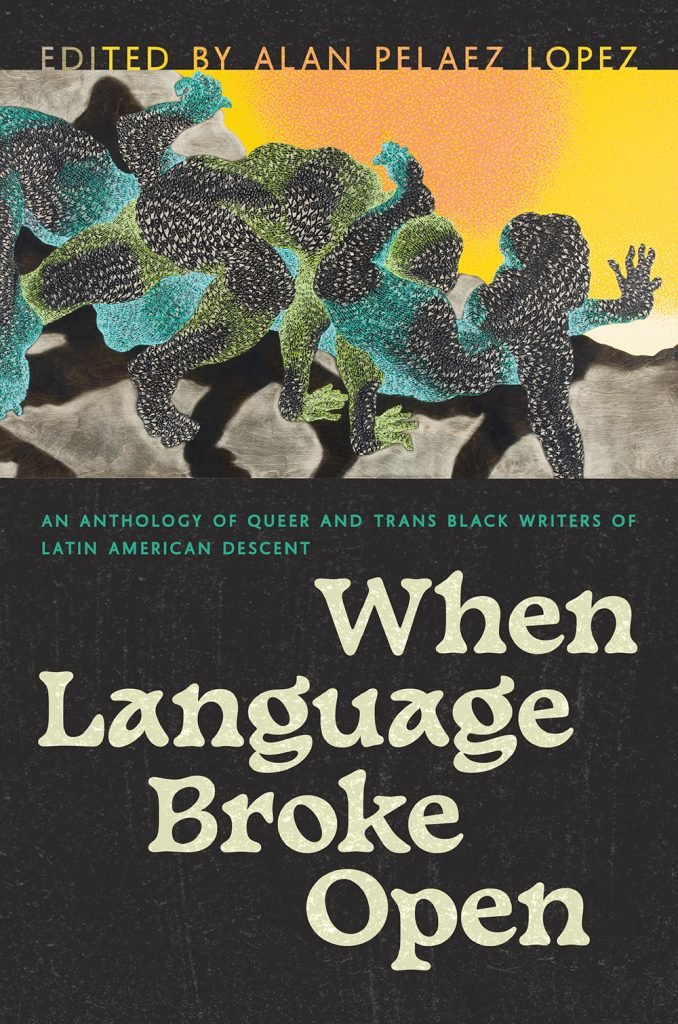La Treintena 2024: 30+ Books and Chapbooks of Latinx Poetry
This year has been a tough one for independent poetry. The recent closure of Small Press Distribution has dovetailed with the ongoing consolidation of mainstream publishing and its backpedaling from the diversity and social justice initiatives it committed to, through pressure, over the last few years.
Still, Latinx poetry itself is flourishing, even if few in the academy are paying attention. For that reason, I have assembled my largest La Treintena ever (nearly 40 titles, each with a commentary) to give a sense of the richness, complexity, and urgency of Latinx poetries published in the past 12 months (or soon to be). I could dig deeper into some noteworthy developments, including the increasing (though still inadequate) visibility of innovative queer Latinx writing of various kinds, and especially of queer and trans Afro-Latinx writing, understood not just as creative practice but as an epistemological and counter-archival intervention (Assotto Saint’s Sacred Spells, Alan Pelaez Lopez’s anthology When Language Broke Open, and Octavio R. González’s limerence are all noteworthy in this regard.) Poetics of disability and neurodiversity are also challenging politics and genealogies of Latinidad; I particularly felt compelled by The Story of What Is Broken Is Whole, Aurora Levins Morales’s career-spanning reader of poems and essays.
“We have so many terrific poets and such a hunger for poetry among our undergraduates and in our communities”
However, my main motivation here is to inspire readers to buy these books and support these authors, and I urge my fellow tenured colleagues to consider teaching these books and inviting their authors (especially those who are not themselves tenured) to do paid in-person and/or virtual events. I also want to encourage scholars to write about Latinx poetry, both in peer-reviewed outlets and in public-facing platforms such as this one. We have so many terrific poets and such a hunger for poetry among our undergraduates and in our communities; yet, we are facing a fundamental disconnect magnified by disciplinary silos and academic power structures.
As I write these words, elite universities around the U.S. (including NYU) are weaponizing the power of the state against those speaking up on the ongoing horror in Palestine, and poets and writers of all stripes have been challenging legacy organizations—from the 92nd Street Y to PEN America—to reckon with their complicity and silence. While the books included here are too recent to substantively engage the events of the past six months, we should remember that writers (and especially poets) have always been on the frontlines in our communities, often working outside the institution and against its violence. Finally, let us honor the poets—in Gaza and elsewhere—persecuted and killed, as well as all those still fighting and finding a way to say the unsayable.
Ariel Francisco’s All the Places We Love Have Been Left in Ruins
Publish date: October 2024
Publisher: Burrow Press
This book presents Francisco’s self-translations under two names, with the Spanish portion of this bilingual edition credited to “Francisco Henriquez” (the author’s father’s name). The translations are sometimes playfully inexact and often subtly attuned to a dystopian blues. Francisco has quickly become a tragicomic poet of Miami, where he grew up, and here, the epic “Insomniami” spans islands of text on a sea of white space. A sample page reads, in its entirety:
“La forma ausente de las olas / Parálisis acuosa del sueño / Que se apodera de la ciudad.”
The text appears in English on the next page as:
“the shapelessness of waves / a watery sleep paralysis / gripping the city.”
2. Violeta Orozco’s Atlas of an Ancient World
Publish date: April 2024
Publisher: Black Lawrence Press
In my blurb for this latest book from Cincinnati-based, Mexico City poet and translator Orozco, I praise its “dreamscapes mineralized into a counter-memory, rooted in yet untethered to everyday language.” The book’s wide range of lyric geographies spans from the canyons and volcanoes to the industrial “urban borderland” of Mexico City. I was impressed by how it embodies and challenges a visionary poetic mode, in conversation with everyone from Gloria Anzaldúa and W.S. Merwin to Nahua cosmologies.
3. Jose Hernandez Diaz’s Bad Mexican, Bad American
Publish date: March 2024
Publisher: Acre Books
The first section of California poet and National Endowment for the Arts fellow Hernandez Diaz’s début collection displays an elegant lyric narrative style worthy of Ray González (who provides an epigram) or Virgil Suárez (who provides a blurb). The other three sections of the book unfold in prose poems that surprised me with their mix of the quotidian, the evocative, and the absurd.
“My Life as a French Existentialist Novelist” namedrops Apollinaire and deadpans “My fatal flaw is that I think people are always looking at me; in fact, it’s just that I was born a handsome child,” while in other prose poems, the speaker meets Octavio Paz on Jupiter, dates Frida Kahlo, attends the funeral for van Gogh’s ear, or reflects on their first day on the moon after being a political prisoner in a home country they refuse to name.
Don’t miss section three of the book, where all except the last prose piece begin with a variation of “A man in a ____ shirt” and the blank is the name of band (Rage Against the Machine, Pink Floyd, Neil Young & Crazy Horse, Mars Volta, and especially Chicano Batman). In the last poem, the psychedelic groove leads us back to the author as character, who must now answer the question “Does the night sky resemble a dragon of your dreams?”
4. Sara Daniele Rivera’s The Blue Mimes
Publish date: April 2024
Publisher: Graywolf Press
Cuban- Peruvian- American poet Rivera’s wide-ranging forms, embodied symbolism, and working through pain are all worthy of the late, great Alejandra Pizarnik, whose epigram opens this début collection. It is hard to pick highlights in a book this expansive, but I am fascinated by how “Sonnet to Sleep Paralysis” code-switches between the pure lyric of John Keats and the Spanish of a spectral “Bisabuela.”
The opening “Earthworks” theorizes poetry as land art in a beautifully fractured language worthy of César Vallejo, and it concludes with a dazzling bilingual meditation on how “When we have to heal / we walk spirals, speak into wind” (in Spanish: “Cuando hay que sanar / caminamos, en espirales, hablamos al viento”).
Don’t miss the line drawings that cut through the book, including in the visual poem “Semillas de lúcuma,” which asks:
“How to be an archive / of things no one / thought to tell?”
5. Gabriel Dozal’s The Border Simulator
Translator: Natasha Tiniacos
Publish date: August 2023
Publisher: One World/Random House
Mexican-American, El Paso poet Dozal’s début collection The Border Simulator arrived with some fanfare given its publication by Random House imprint One World, a rare occurrence for a first book of poetry, much less one as experimental, speculative, and translingual as this one.
It is, indeed, a book as much about speculative borderlands as it is about the Mexico-U.S. one, and it churns full of digital and political detritus as if challenging the very concept of a border in a world of simulacra. For my taste, Dozal’s writing is at its best in longer pieces (often alternating between long lines of verse and paragraphs of prose) where Dozal seemingly leads us to dead ends only for the poet’s imagination to find its way through fronterizamente (the borderlands as durational performance). Witness “The Border Simulator (Is This a Language Desert Also?),” where prose becomes a metapoetic aside:
“DEAR CROSSER, YOUR DIGITAL footprint is more of a digital stain on the border simulator. Customs will always try and wipe you clean. Are you sure you’re sure which customs I’m talking about? Sometimes I’m not even, because custom’s words wear camouflage to ensnare us and in trap, there’s life. Don’t they say that? With restraint you’re freed? Then I’m the freest crosser in the border simulator.”
The play on words with customs alone makes this passage something special, to say nothing of how it connects to larger questions of surveillance technology and selfhood that cut through the book (translator Tiniacos wisely opts to leave customs untranslated in the Spanish). While Tiniacos does an impressive job of rendering the virtual borderlands of Dozal’s English into an analogously liminal (and playful) Spanish, I am not entirely sure what the concept behind the bilingual edition was, since Dozal’s poetics challenges the accessibility that presumably motivated the decision to include a facing-page translation.
At its best, this book has genuine philosophical weight as it reflects on technology, the self, writing, and capital. Still, I find Dozal less useful when it comes to imagining the border as a conceptual space shaped by a complexity of migrant-embodied geographies akin to those that define the contemporary Mexico-U.S.border. Central American migrants here come across as collective bodies (“the Salvis who’ve crossed”), colorful figures in passing, even if we grant the poetic license such a speculative project deserves (“I’ve seen Guatemalans in little cupboards / in the back of their trucks / in clever compartments / once over, they pop out / with open arms and say cabrón”).
The publisher’s blurb tells us that in The Border Simulator “the U.S.-Mexico border is redefined as a place of invention,” but I think it is fairer to think of it as an impressive first book by a talented poet that expands upon a long and rich tradition of borderlands invention. I hope more mainstream publishers will make room for books as smart, weird, playful, and ambitious as this one while reflecting a range of border geographies and innovative aesthetics. Meanwhile, I will be following Dozal’s work with interest.
6. Lucianna Chixaro Ramos’s Cells
Publish date: November 2023
Publisher: Burrow Press
In the spirit of full disclosure, the Brazil-born, Florida-raised Ramos was my student at Stetson University’s MFA of the Americas. I read an early draft of Cells and encouraged her to publish it as her début. At Stetson, Ramos worked with poet Jena Osman, and Cells reminds me of Osman’s rigorously investigative and processual approach to the book.
In Cells, bees, membranes, winged things, and superorganisms all coexist, taking the shape of abecedarian experiments, list poems, conceptual instructions, and visual-text pieces playing with geometric shapes. Her poetry’s formal elegance gets a boost from her graphic design experience and the book’s materiality: hardcover, minimalist design, and lowercase text, all in a numbered limited edition of 250.
Cells is a welcome addition to Brazilian-American poetics and to experimental Latina writing, and its visual and conceptual ambitions display a deep connection to migrant ecologies, as in the opening of “(Cell 0)”:
This is the land of the beekeeper,
bound to the farm by his visa,
docile, unbarked. The work of staying
in this country, making honey,
that is, nothing
compared to selling Queens.
7. Oliver Baez Bendorf’s Consider the Rooster
Publish date: September 2024
Publisher: Nightboat Books
Since his 2015 début, The Spectral Wilderness, Bendorf—a trans Puerto Rican poet from the Midwest—has been at the forefront of queer Latinx ecopoetics. Consider the Rooster is a brilliant poetry collection that doubles as a (necessarily fragmentary) philosophical essay on,among other things, nature and the unnatural as they relate to the body-mind; referentiality and naming; the coloniality of gender; animality and the question of rights;, communities of care in the context of medicalization; and queer trans diasporican life in the Midwest.
Channeling Sylvia Rivera’s foundational fury, Bendorf insists on a queer and trans future that “can no longer be placated by the colorful advancement of rights,” where our dead can finally have a voice beyond the necropolitics of empire. Poetry here is the language of our becoming free and our “becoming particulate,” guiding us “toward pleasure / from future / gravestones.”
Bendorf is a great composer-composter of poems whose work never surrenders to ecological crisis, finding an “interface / with verdant properties” in the work of everyone from Ovid to Octavia Butler. Don’t miss the lyric epistemology of “All I Have Is the Woods Inside My Head” (“I step out / to the deck in my trans masc robe because in the end, no one will / remember. All that I’ve named / has a life outside of me.”) and the anthemic “Michigan,” which may be the definitive queer diasporican poem of the Midwest by anyone other than the late Rane Arroyo (who makes an appearance in the book).
If you’re like me, you will also laugh at “Stonewall Sestina,” where the bricks thrown at the start of the Stonewall uprising blur with bricks of Bustelo coffee.
8. Sandra Guzmán’s Daughters of Latin America: An International Anthology of Writing by Latine Women
Publish date: August 2023
Publisher: Harper Collins
Guzmán’s anthology is a remarkable achievement, bringing together U.S. Latinas and Latin American women across centuries and geographies with a vision that is as erudite as it is radically decolonial. Including work from ancestors like Sor Juana, Carolina Maria de Jesus, Salomé Ureña, María Sabina, Audre Lorde, and Sylvia Rivera to contemporaries such as Edwidge Danticat, Gioconda Belli, Angie Cruz, Alexandria Ocasio-Cortez, and Sonia Guiñansaca, Guzmán works at the edges of the lettered city, where there is room for the Black and Indigenous, for the trans and the undocumented, for the activists and healers, as well as for the knowledges and poetics marginalized by a hegemonic feminism. (Full disclosure: I am included in the anthology as the translator of a poem by Nicole Cecilia Delgado.)
I cried when I saw the table of contents and realized the power of Guzmán’s accomplishment, as this is a book that would have likely changed my life (and checked and nourished my politics) had I come across it in my youth. Working against masculinist and print-centric formations, Guzmán stresses the need to think beyond the conventions of writing and to include material such as songs, chants, prayers, speeches, and journal entries. Along with Pelaez Lopez’s When Language Broke Open (discussed below), this book is essential reading for those of us thinking about literature beyond the canonical trappings of Latinidad.
9. José Antonio Rodríguez’s The Day’s Hard Edge
Publish date: July 2024
Publisher: Curbstone Books/Northwestern
Rodríguez’s fourth book is a distillation of his long-running lyric project: finding light amid pain. In that sense, we should read him not only as a noteworthy figure in the evolution of queer Chicano poetry but also in the context of a lyric tradition that bridges the sensuous and the oneiric, along the lines of Czesław Miłosz (who provides an epigram) or Alberto Ríos (whose epigram opens the book). For all its verbal compression and imagistic precision, The Day’s Hard Edge is an emotionally difficult book, and it wears its difficulty on its sleeve, as evidenced by “(NUMBER PER DAY) × (NUMBER OF SCHOOL DAYS PER YEAR) × (NUMBER OF YEARS) = 5,400; OR, A LOW ESTIMATE OF THE NUMBER OF TIMES I WAS NAME-CALLED BETWEEN THIRD AND EIGHTH GRADES,” which consists of pages and pages of nothing more than the f-word for gay men repeated over and over.
The distance between migrant and homeland, parents and child, Spanish and English amplify the violence of compulsory heteromasculinity. The poems confront all this violence with a gravitas and frankness without subordinating the lyric impulse to a clinical eye (“This is not about the unwanted child, / Or what a therapist called embodiment of the violation”).
Lost, wounded, or dead animals abound throughout the book, as if indexing a queer brown animality and trauma, especially given several devastating poems about the mother and the father. Even so, Rodríguez claims for poetry the power of “some elemental language / That we could never decipher,” in intertextual conversation with other Latinx poets of the unvarnished, such as Ada Limón and Luivette Resto. Don’t miss the short “ELEGY TO ELEGY,” which floored me with its fusion of the metapoetic (“At the risk of risk / I want an elegy for elegies / A momentary account of loss / A praise of praise”) and the mythopoetic lyric (“The boy was always / Already lost, there / In his mother’s arms, there / Before the dark”).
10. Xavier Cavazos’s The Devil's Workshop
Publish date: October 2023
Publisher: Cleveland State University Poetry Center
Mexican-American poet Cavazos’s latest book is a formal and emotional tour de force and it may be the most unsettling book I’ve read in the past year. It reimagines and complicates the recovery narrative by using the figure of the devil as the personification of the speaker’s drug addiction, the speaker’s childhood abuser, and the speaker himself, subject to his mother’s attempted exorcisms by way of curanderismo.
A decorated veteran of the raucous Nuyorican Poets Café slam scene of the 1990s, Cavazos brings a performer’s savvy to the scoring of poetry on the page, making room for vulnerability and irony amid the narration of trauma while rigorously avoiding facile sentimentality and eschewing a simplistic narrative of overcoming.
The heart of the book is in the many sections called “The Devil’s Workshop,” where horror’s permutations take the shape of everything from blocks of processual prose to screaming concrete poetry. Beyond those, check out “From the porch where my FATHER’S BODY was wrapped in a sestina,” which redeploys the tricky sestina form into a gut-wrenching yet luminous reflection on the intersections of cross-generational trauma, militarism, class, and abject masculinities (“My daddy died with lots of scavengers at his side”).
For a fusion of formal play and political imagination, it’s hard to beat a poem like “Alphabet’s annunciations and advice to BARACK OBAMA after watching him take the oath,” which syncopates the abecedarian poem with an intellect and swing worthy of the often imitated yet never surpassed Harryette Mullen, whose “lyrical mathematical mayhem” Cavazos shouts out and echoes.
11. Stephanie Adams-Santos’s Dream of Xibalba
Publish date: May 2023
Publisher: Orison Books
This memorable book is an oddly beautiful incantatory long poem by a self-avowed “queer Guatemalan-American poet, writer, and mystic from Portland, Oregon.” While I am not quite sure what to do with it, I am glad it exists, and I agree with Jericho Brown (who chose the book for the 2021 Orison Prize) that the book’s breathless flow and spirals of text amplify its poetics of rediscovery.
“Xibalba” is the K’iche Mayan name for the underworld, and I think one could read Adams-Santos’s book as a counter-song to the spiritual tourism of Allen Ginsberg’s mystical classic “Siesta in Xbalba” (a misspelling of Xibalba that Ginsberg apparently opted to never correct). Latin American surrealism here becomes a way for the (queer) diasporic subject to imagine routes and routes beyond a normative Spanish or English, dreamscapes of “a lost language.”
12. ire'ne lara silva’s the eaters of flowers
Publish date: January 2024
Publisher: Saddle Road Press
In luminous and harrowing poems with titles like “the pain of the body is sacred,” “what the hospice nurse asked,” and “mala hierba,” silva interweaves reflections on the untimely death of her younger brother, family histories of chronic illness against the backdrop of migrant South Texas geographies, and a journey to healing rooted in Indigenous knowledges of the land. Don’t miss the powerful “poem for my kidneys,” where she expands upon her classic blood sugar canto in lyrical prose that asks “if the question was amputate or die what would i choose but what if that isn’t the choice i’m given what if after all i’m claimed by the destiny of my father’s people.”
Structured around flowers (hibiscus, dandelion, rose, marigold), the book affirms “the old hunger to grow wild” against the medicalization of migrant communities. The closing poem is a song “for Uvalde” (site of a 2022 school shooting) that wonders: “are tears enough are flowers enough are songs enough.”
13. Reyes Ramirez’s El Rey of Gold Teeth
Publish date: October 2023
Publisher: Hub City Press
A self-described Houstonian of Mexican and Salvadoran descent, Ramirez alternates between flowing and fragmented lyrics that bridge city, body, ocean, and cosmos across many sures. Don’t miss the opening “Why I Leave the í Out,” which frames the missing accent in Ramirez across “a map of a beige texas, / pock-marked & river-veined / pores labeled into illegibility, above a grey Mexico” and concludes by asking “how can i reclaim / what i did not shed?” Other highlights include the complexly Nerudian odes to food “Pupusas” and “Pozole,” the eerie bursts of textual sediment of “Asthma Attack,” and the dreamscapes of the anti-epic “The First Mexican American Astronaut Was Once,” which channels Rita Dove, Gertrude Stein, and William Carlos Williams among others. Buzzing in my brain is the next-to-last stanza of the concluding “A Lesson Toward Dispossession,” which reads:
Colonization is a pedagogy
I master with every envisioning
of my destruction. What is the mind
but a container of spilled sangre?
14. Bonafide Rojas’s Excelsior. New and Collected Poems
Publish date: January 2024
Publisher: Grand Concourse Press
This self-published volume collects poems from Rojas’s first three books of poems along with around a dozen newer poems. One of the best-known poets working in the Nuyorican tradition to have emerged in the past quarter century, Rojas brings a musician’s ear to newer pieces like the anaphoric “Cantos (pt. X),” a Nuyo-futurist anthem in the spirit of Pedro Pietri for a world “where teleportation is finally invented,” “where our questions are answered in colors,” and “where freedom is a million dreams alive in the bellies / of our children.” My favorite newer poem is the visionary “Sobrivivente,” dedicated to artist Adrián Viajero Román, where Rojas bridges personal, family, and diasporic histories and the struggle of post-Hurricane María Puerto Rico.
15. Leslie Sainz’s Have You Been Long Enough at Table
Publish date: September 2023
Publisher: Tin House Books
This début collection impresses with its formal and political ambition. Originally from Miami and based in Vermont, Sainz stages montages of quotidian and geopolitical violence in poems skewering the Cuban state but also U.S. military intervention in Cuba (some sample titles: “Threat Display,” “Libreta de abastecimiento,” and “Failed State/False Images”).
I especially appreciated the queer sinuousness of poems like “Sonnet for Shango” “Mal de Ojo” and “Attachment Theory,” whose memorable first line is “Ponce de León was a comemierda.” The book ranges from erasures to experiments with the sonnet, but it always returns to the critical possibilities of an embodied language beyond patriarchy: “Young / women are a series of images. We are regimes.” Don’t miss the image chains and synaesthesias of “Sonnet for Ochún,” where the speaker finds “clouds on leashes, loose roosters” and “thoughts ugly as clothespins” until we “feel more / like water.”
16. Vincent Toro’s Hivestruck
Publish date: August 2024
Publisher: Penguin Poets
In this work of self-avowed “Latinxfuturism,” the ever-inventive Toro takes a galactic step forward in his long-standing diasporican exploration of indomitable poetic forms, developing a cyborg poetics and politics that works as a critique of imperial technocapitalism and as an imagining of its ruptures.
“Blanca Canales 2.0” evokes the iconic Boricua nationalist while imagining a cosmic sovereignty in the spirit of Pedro Pietri. Speaking of Pietri, “Binary Fusion Crab Canon” does concrete poetry with a punk swing that would make El Reverendo proud, while other pieces recall a fleshier (less spiritual and John Cage-ian) Edwin Torres, whose 2001“A Nuyo Futurist Manifestiny” prefigured some of what Toro is doing here.
Amid all the cool noise and verbivocovisual explosions and expansions, I especially enjoyed the moments when Toro shows off his lyrical and formal rigor, as in the gorgeous tercets of “Ofrenda for the Arecibo Observatory,” where formalist geek and decolonial dreamer come together. “Ramm: Ell: Zee’s Reboot [Non Elegy /iDécima]” planet-rocks the traditional Spanish décima into a “Hyte wild styles un cosmic flush time / machine, un Ikonoklast rhizome / of spectral ritmo portals minds roam / to snatch back the islands of dimes / empires embezzled and primed / for mass snacking” with a flow whose layout is irreproducible here. Here’s to Nuyorican poetics as cyborg form!
17. Saúl Hernández’s How to Kill a Goat and Other Monsters
Publish date: March 2024
Publisher: University of Wisconsin Press
In “Ars Poética for a First G(ay)eneration Mexican-American,” San Antonio poet Hernández documents and counters the shame of being racialized and sexualized while staging an erotic confrontation with white supremacy: from “I lick every drop of sperm off a white man’s navel” to “In the third grade, my ESL teacher handed me English / in a book. Every word entered me / the way I penetrated a white man: eager & willing.” Later in the poem, the speaker describes being “broken into” by white men, including an off-duty cop who tells him “I love Latin men.” followed by “Last night I arrested a man who looked like you.”
As Rigoberto González notes in his back-cover blurb, these carefully developed intersections between language and desire, sexuality and ethnicity, structure Hernández’s impressive début. Other standouts include the queer pastoral “The Loquat Trees & The Boy Next Door” and “This Is Why I Fall Fast,” where a 19-year-old’s hotel room sexual encounter with another man is cleverly juxtaposed with the wisdom of a curandera (“She said: Mijo, this is what is inside of you. She caught a moth with her hand & / handed it to me”).
18. Roberto Harrison’s Isthmus to Abya Yala
Publish date: April 2024
Publisher: City Lights
In my blurb for Isthmus to Abya Yala, I write: "This astounding book works as both summation and revision of Roberto Harrison's long-running hemispheric poetics, among the most beautiful and powerful of our time. Rooted in surrealism, the Latin American neo-baroque, and the geopoetics of the author's native Panama, Isthmus to Abya Yala theorizes its own mode of 'Mobilian' world-building, where the juxtaposition of words and visual art achieves a counter-ecology of 'suprarational' vision in light and shadows amid 'the business cycle of terror.'"
In poems like “SENT IN MOBILIAN JARGON VIA ISTHMUSES” (“and as the empires will rise and collapse for Tecumseh / made dust for the Caribs through raids on the Sea”) and “DELETE MOUNT RUSHMORE,” Harrison arrives at a decolonial surrealism that bridges Will Alexander (who provides a blurb) and the Latin American vanguards, peeling back layers from the post-neobarroco poetics he had perfected in his earlier books and leaving us where “lemon rinds / spray themselves / around us / as we over calculate / the lesson behind growth / flowing through the big bangs.”
The book includes Harrison’s striking drawings; the vivid color and layered geometries serve as both standalone visual poems and as testaments to the untranslatability of language excerpts as broken form. Don’t miss the perfectly distilled “FEBRUARY 24, 2022,” which reads like a diary entry into a (fraught) relational cosmology: “but my skull is made / as a flower / and my body has sprouted / to sleep in the earth / where the others are.”
19. Valois J. Vera’s I, The Revolution
Publish date: September 2023
Publisher: Self-published
Vera, a disabled diasporican poet who goes by Crip Lyrical, recently invited me to read for their virtual Thunder & Lightning Poetry Collective series, which showcases disabled BIPOC and disabled queer poets. I felt welcomed in community and impressed by Vera’s mix of warmth, humor, and decolonial perspective. Reading I, the Revolution, I was immediately struck by the poem “The Revolution Will Not Be Accessible,” which rewrites Gil Scott-Heron’s classic “The Revolution Will Not Be Televised” with an irony as clear-headed as it is radical. (Spoiler alert: the poem’s last line is “Unless we figure that shit out, for ourselves!,” echoing the classic disability justice rallying cry “Nothing About Us Without Us.”)
I love how the poem challenges the very digital activist platforms where Vera is organizing (“There will be no pictures of us on / Instagram with inspirational captions. / There will be no trending tweets or tik toks about / The Handicapped. / The Handicappable”) and the very ways social movements can reproduce ableism: “There will be no ramps leading you to / the back of the building and through / the kitchen and trash area of the post protest party.” Amid so much institutional and state violence, I’m reminded of these lines from “The Awakening”:
“Our songs are silenced today
I, woke,
chose violence, today
Violence in response to violence.”
20. Octavio R. González’s limerence
Publish date: April 2023
Publisher: Queer Mojo/Rebel Satori Press
I have long waited for a full-length collection from González, whose 2009 chapbook The Book of Ours (Momotombo Press) was a breakthrough for queer Afro-Dominican poetry. It was worth the wait, as limerence oozes with what Carlos Ulises Decena calls in his blurb “the funk of history” and is “revelatory, fierce, and filthy in the most profound way,” as Emanuel Xavier puts it.
While documenting violence and loss, González finds beauty in the struggle of young, migrant queer boys of color and their fugitive communities. Still, limerence avoids a simple politics of affirmation or sentimentalization, opting instead to linger in queer loss, fragmentation, and even obsession, as evoked in the title. The queer psychoanalytic dimension of the book very much aligns with González’s excellent scholarly work in queer and ethnic modernism, and evinces a poetics that theorizes from the flesh and its hungers.
González ranges from the playfulness of pieces like “gay chat room: found poem” to gorgeous flashes of lyric vision: from “i, corrugated sentinel washed by / union square skies” and “yes, we / drew sonnets in pencil and heartache” to “i dream of a sky marred / by two ravens flying in unison.”
21. Emanuel Xavier’s Love(ly) Child
Publish date: October 2023
Publisher: Rebel Satori Press
Xavier’s latest book, currently a finalist for the Lambda Literary Award in Gay Poetry, may be his most compelling. It is a book of reckonings: with the truth about his biological father, with the fraught relationship with his mother, with childhood sexual abuse, with being rejected by homophobic family, with the passing of loved ones and the trauma of being a survivor, and with getting older and learning how to heal as a working-class queer brown child of diaspora.
At the same time, it is a book about finding love, including a self-love that can only be rendered in the sparest prose (“Après le feu” concludes: “I sleep like the child I never really got to be, dream for all our angels who never had this moment”). The prose piece here also becomes a way to say the unsayable, sometimes in the second person (“You’re just a child but you monetize pain” in the heart-wrenching abuse narrative “Growing Up Ungodly”).
At other times, breaking the rules of prose becomes a way of conveying the weight of a broken mother-son relationship, as in the confrontation of “Parole” (“Violence was an artform”) or in the slashes of the moving “Feo,” where the speaker compares himself as a “indigenous child / unwanted / brown-skinned” to how his mother “decided to pass for white.”
Don’t miss the concluding elegies for poet Justin Chin and dancer Willi Ninja, which give a sense of the creative and political amplitude of Xavier’s vision for queer of color futures.
22. Virginia Bulacio’s Luna inmigrante
Publish date: June 2023
Publisher: Alegría Publishing
Originally from Northern Argentina, the Los Angeles–based Bulacio writes accessible Spanish-language poems that, while largely lyrical, touch upon immigrant experiences and growing up undocumented. The unobtrusive use of imagery and frequent anaphora make this a good choice for younger readers.
23. Amy Álvarez’s Makeshift Altar
Publish date: March 2024
Publisher: University Press of Kentucky
In my blurb for this début collection, I call it a “fully realized first book that boldly summons and carefully distills the boundless possibilities of poetry, daring us to live, mourn, and play at the limits of everyday language” and “a song of afterlives in the here and now, a libation for all those ‘forced to dance in scarcity.’"
Born in New York City to Jamaican and Puerto Rican parents, Alvarez channels jazz aerodynamics and finds counterrhythms in the sonnet's pentameter. Having just read with Álvarez at a festival in Florida, I can attest to the power of her voice as instrument and to how these poems function as impossible scores for an ungovernable language.
Many of the poems reflect Alvarez’s time living in Appalachia while teaching at West Virginia University, and her Jamaican and Nuyorican cultures often intertwine in a book that is constantly “remixing / notions of home” (check out the poem “Gathering Ingredients for Sancocho in Appalachia During a Pandemic”). Here, we find ecologies of Blackness and counter-histories of a militarized empire (“Predatory Rites,” “Photo of My Brother in Djibouti”) but also witty meditations on sex and/as power (“How To Date a White Boy,” “Oya Fucks Cúchulainn”). Bonus points for the Lucille Clifton–-inspired golden shovel “Shaped into a Kind of Life.”
24. C. L. Rooster Martinez’s Mexican Dinosaur
Publish date: October 2023
Publisher: Write About Now
San Antonian Martinez’s third book expands upon his playful, sonorous, socially conscious poetics. Some poems read like maximalist performance scores while others opt for a quieter lyric voice, even while exploring questions of class, culture, masculinity, and displacement. I was struck by the text bursts of “Jury Duty Blues,” where an awareness of how the speaker’s name and data are “categorized and filed” becomes a denunciation of how “this land is archived incorrectly and yet this is the order of things.”
Another standout is “The Fourth Generation,” which reads like an anthem for today’s greatgrandchildren of migrants:
“We had hands ready to bleed and work
and we were given the internet
we had hands ready for revolution
and we were handed debt
we have hands we have these hands we have hands.”
There is also a QR code in the back of the book that will take you to an accompanying playlist raucous and rhythmic enough to wake up this old Boricua dinosaur.
25. Icess Fernandez Rojas’s The Opposite of Breathing Is Cement
Publish date: September 2023
Publisher: Four Palaces Publishing
Of Cuban and Guatemalan descent, Fernandez Rojas is a creative nonfiction writer and journalist. Her first book of poems stands out for me in how it reflects on mental health from a Black Latina perspective. There are also longer poems like “I Don’t Know How to Be Cuban Anymore” and “Forgetting Cuba” (sample verse: “My island is lost”) that reflect on cubanidad from a diasporic post-Fidel perspective.
Perhaps my favorite pieces here are the variations on the duplex, a form invented by poet Jericho Brown that is in itself a mashup of older forms and typically involves a sequence of syllabic couplets where the second line of each couplet is repeated or riffed on in the first line of the following couplet. In Fernandez Rojas’s hands, the duplex becomes something like a blues with clave swing, as in “’Why Do You Speak Spanish if You’re Black’: A Duplex,” which works as a Black Latina anthem with couplets such as:
“Too black, not brown enough to make sense;
my ancestors spoke in battling tongues.”
As a neurodivergent poet with a history of sleep issues, I was moved by “Nighttime Brain in Depressive Episode: A Duplex,” where the book’s title appears as a refrain and where I can hear the beautiful ghosts of everyone from Emily Dickinson to Audre Lorde:
“The healer demanded life from me,
but dying was easier once I knew how.”
26. Dimitri Reyes’s Papi Pichón
Publish date: July 2023
Publisher: Get Fresh Books
In this book, a finalist for the Andrés Montoya Poetry Prize, Reyes continues and refines his poetic exploration of Boricua Newark. As I write in my blurb, in Papi Pichón “a son imagines his father as a bird whose wings span the barrios of Newark and New York City and the mountains of Puerto Rico.” I cherish the book’s wide-ranging and sensitive exploration of working-class Boricua histories (baseball, boxing, factory work, the Young Lords) from the perspective of Newark, a city so key and yet so often marginalized in diasporican history and culture.
Don’t miss the unforgettably titled “Papi Pichón Develops Habichuelology Through Cooking & Existing,” which claims a recipe for Puerto Rican beans as a tool for surviving the carceral state. Reyes’s writing swings with “the language of the trombone” and imagines “bodies connected through a common wind,” beyond the disaster porn and speculative extraction that links Newark and Puerto Rico. Don’t miss the from-bomba-to-hip-hop syncopations of “Papi Pichón Prescribes Bomba” and the breathless yet precise prose of “Papi Pichón Performs Baptism” and “Papi Pichón Awash,” both somewhere between Polaroid and prayer.
27. Joshua Garcia’s Pentimento
Publish date: March 2024
Publisher: Black Lawrence Press
Garcia’s début collection is a conceptually intriguing mediation on words and images, juxtaposing self-portraits of the author and poems calling themselves “self-portraits,” often in conversation with trailblazers in experimental queer self-figuration such as Andy Warhol and Frank O’Hara. Some of the most memorable moments in the book involve the blurring of boundaries, such as those between gay cruising and pastoral poetry or between prayer and sex.
“Someday I’ll Love Joshua Garcia” hooked me from its opening line:
“So my new thing is apparently getting high and sexting strangers.”
“Self-Portrait as Archetypal Media Image: Leather” works as a variant on the meme poem, with just a couple of lines of centered white text framing a self-portrait of the author on all fours wearing only a leather jacket. Somewhere between that piece and the refractive “Self-Portrait as Andy Warhol as Saint Sebastian” lies an ars(e) poetica.
28. Monica Rico’s Pinion
Publish date: March 2024
Publisher: Four Way Books
A Mexican-American poet who grew up in Saginaw, Michigan, Rico writes about and from landscapes not typically centered in Latinx poetry and does so across a range of forms: from golden shovels and riffs on Gabriel García Márquez and César Vallejo to eccentric prose poems like “Mexican in Michigan,” where the speaker decides to celebrate Joseph Biden and Kamala Harris’s inauguration by going “for a walk alone in the somewhat isolated country of Northern Michigan” and wishes her parents were with her.
Unsurprisingly, the owl is a key bird here, featured prominently in numerous poems, including in the Theodore Roethke-inspired villanelle “Ornithology,” which sings with an elegance worthy of Elizabeth Bishop:
“The voice of crow isn’t caw but snow,
an arc of ink across a feathered wave.
To find an owl I must follow the crow.”
Far from Aztlán, a nature poem like “Robin” asks us to imagine new yet no less compelling relationships to land:
“Michoacán misplaced in Michigan.
A grito dazzles in midair
spins its skirt
Hem loose,
the string an almost forest.”
Elsewhere, poems like “What Remains of General Motors” and “Shotblast” (an effectively restrained elegy for a dead tío) self-reflexively invoke the decay of Saginaw (a onetime car and manufacturing mecca), while “Hemingway Country” ironically evokes Northern Michigan as a chosen land where Ernest Hemingway summered for many years. At the end of the book, in the striking “Cortés Burning the Aviaries,” colonial Mexico and Northern Michigan blur into one history of Indigenous dispossession—and resistance, as embodied by the indomitable song of birds.
29. Melania Luisa Marte’s Plantains and Our Becoming
Publish date: August 2023
Publisher: Tiny Reparations Books/Penguin
“Afro-Latina,” Marte’sher viral performance poem made famous by the influential online platform Button Poetry, frames her début collection. “Afro-Latina” begins by addressing how the term Afro-Latina isn not found in a dictionary and how it challenges normative understandings of the terms “Black” and “Latina.” Structured as paragraphs of poetic prose, the poem ends with a memorable standalone tercet and quatrain:
“My culture is not your cash crop.
My mother’s country is not your paradise.
My bilingual tongue is not your inquisition to crusade over.
Dicen que ‘soy Latina,’ until I start talking about colorism.
Until I check them on erasure.
Until I choose to speak on my own behalf.
Until I remind them my Afro comes before Latina.”
I appreciate how Marte, here and elsewhere, plays with the poems on the page in ways that would not be evident from how she performs the work, thereby underscoring a tension between poetry on the page and in embodied performance. As anthemic as “Afro-Latina” is, the Afro-Latina politics of Plantains and Our Becoming will be familiar to anyone who followed Afro-Latina Twitter and Tumblr in the 2010s: from poems about Cardi B and Amara La Negra to prose meditations on colorism and on the anti-Blackness of services like Ancestry.com (the latter cleverly followed by the author’s own alternative genealogical chart, which celebrates an ancestral beauty beyond respectability).
Even the bold lyric we of “Telenovelas / How I Learned To Be A Girl” seems unthinkable without the long-standing critique of the anti-Blackness of telenovelas by Afro-Latina social media pioneer Zahira Kelly-Cabrera (a.k.a Bad Dominicana), who is presumably the “Zahira” thanked in the acknowledgments and whose influence is everywhere in this book. Still, Marte builds on such work with formal range and ambition in poems that dialogue with African American poets from Claude McKay and Suzi Q. Smith to Lucille Clifton (the book ends with a lovely poem after Clifton’s classic “blessing the boats”).
Some of the most memorable writing here addresses Marte’s experience as Bronx-born and Lower East Side–raised Dominican poet living between New York and the Dominican Republic. Don’t miss “Questions for Hispaniola,” which addresses Hispaniola “Before you were a border” as one island” and implores “Teach us to be freedom fighters, if only while we sleep,” summoning elders like Mamá Tingó, Louverture, and Dessalines in both Spanish and Haitian Kreyòl. Also, check out the vernacular translingual mic drop “Black Spanish,” whose unforgettable first stanza reads:
“E’ que hasta el español mío e’ Negro
Y tiene un flow ratata
Y no pide perdón, no se escusa ni se humilla.”
30. Susana Praver-Pérez’s Return Against the Flow
Publish date: February 2024
Publisher: Black Lawrence Press
In my blurb, I note how this latest book from Puerto Rican poet Praver-Pérez “decenters the voices of developers and colonial apologists to amplify those of mothers, neighbors, storytellers, and with them, the bomba drums of an archipelago and its many diasporas across Puerto Rico, New York, Oakland, and beyond.”
I appreciate how the book amplifies its Boricua politics through epigrams and intertextual invocations of the work of poets and singers from the archipelago and across the diaspora, including Isa Guzmán, Denice Frohman, Nicole Cecilia Delgado, Rich Villar, Martín Espada, Victor Hernández Cruz, iLe, and Bobby Capó. Some highlights include the womanist land-reclamation anthem “Propiedad Horizontal” (“self-sufficiency / & sovereignty / are sisters”) and the panoramic “Vistas del Cacique,” whose islands of text ask: “Where will it end, / this Hawai’i’zation?” and “When will the rightful / rebellion take hold?”
31. Assotto Saint’s Sacred Spells: Collected Works
Editor: Michele Karlsberg
Publish date: August 2023
Publisher: Nightboat Books
Sacred Spells is a long-overdue edition of the collected writings of this Haitian- American poet, performer, and activist who was a crucial figure in New York’s Black and queer underground during the 1980s and 1990s. In addition to poems, this volume collects song lyrics, fiction, essays, and plays, and it honors the boundless imagination and political brilliance that fueled Saint, who was creating and organizing right up until passing from AIDS in 1994 at the age of 36.
When I was asked to read at the Sacred Spells book launch at the Poetry Project, I picked “Lady & Me” because it spoke of a pre-gentrification midtown Manhattan where “puertoriquenos y dominicanos / thunder greetings with orders / in a lightning of spanish / discuss el diario’s headlines / gobble the $1.99 special / of huevos con cuchifritos” and yet found room for communities of care among the most vulnerable: the speaker returns from sick leave, sits down next to Lady, and she “gazed at the ghost of me / asked ‘amigo, como esta.’”
Here and elsewhere, Saint finds in the body (sick and queer, Black and Caribbean, working class and migrant) not only dignity and beauty but also a sense of connection and shared becoming. (In this, Saint’s work reminds me of Audre Lorde’s, who is invoked in the poem “Audre’s Apple’s.”) Don’t miss the performance piece for 23 masked performers “Black Fag,” which reimagines Black queer youth as “eternity’s children,” or the moving short personal essay “Haiti: A Memory Journey,” which pointedly recalls the speaker’s childhood and sexual awakening in Haiti and migration to New York amid family drama and struggle.
There is power here even in a short sketch like “Miss Thing/for marcia johnson,” as it summons a queer of color underground genealogy that this book so powerfully recovers. Sacred Spells is essential reading as a dissident counter-archive that affirms Black and queer working-class life beyond state and media necropolitics, and in a sense, we are all living in Assotto Saint’s world now, luckily with this book to guide us.
As writer and performer Pamela Sneed (who was close to Saint) put it in her excellent short essay that opens the book, Saint is someone who practiced ancestral self-healing and is, in a sense, “always among us” like the echo of the asòto drum.
32. Aurora Levins Morales’s The Story of What Is Broken Is Whole: An Aurora Levins Morales Reader
Publish date: November 2024
Publisher: Duke University Press
Levins Morales’s work has been essential to my journey navigating queerness and epilepsy as a Boricua seeking to build diasporic bridges, which is one reason I urged her to do a reader of her work. The other reasons? Well, read my blurb, which has since been trimmed down by the publisher for space reasons, but was an attempt to distill what is sustaining and urgent in her work. I hope to bring Levins Morales to NYU for a book presentation in Spring 2025.
“The Story of What Is Broken Is Whole is cause for jubilation, finally bringing together in one volume over 40 years of essays and poetry by one of the major poetic thinkers of our time. A mentor to so many of us, Aurora Levins Morales has long written from and about the many different forms her and our survival and liberation can and must take, from her contributions to women of color and Latina feminism in This Bridge Called My Back (1981) and Telling to Live (2001) to her groundbreaking decolonial writings on ecology (Medicine Stories, 1998) and disability (Kindling, 2013). And then there are stunning, meticulously researched yet defiantly uncategorizable works like Remedios (1997) and the book of prose poems Silt (2019), rooted in the land yet imagining alternative Indigenous and diasporic epistemologies (Boricua, Ashkenazi, queer/cuir) as complex and indomitable as our bodyminds.
These urgent pages “hum as they travel,” singing the whole truth in her and our brokenness while showing us how to “mark the trail for each other.” Juxtaposing selections from all her books (including out-of-print and hard-to-find titles) with anthologized and unpublished pieces, Levins Morales scores a call and response between geographies and languages, movements, and generations. To have all these stories in one volume, brilliantly edited and introduced by the author herself, is to be heartened and emboldened by “the gifts of both memory and imagination, able to learn from our many histories, and create what does not yet exist.”
33. Éric Morales-Franceschini’s Syndrome
Publish date: January 2024
Publisher: Anhinga Press
In this début full-length collection, Morales-Franceschini builds on the anticolonial politics of his chapbook Autopsy of a Fall, reviewed in La Treintena 2021, with a wide-ranging anti-eugenic Boricua manifesto that channels the insurgent voices of Lolita Lebrón and Pedro Albizu Campos from a diasporican perspective, transcreating Lola Rodríguez de Tió’s original, insurgent “La Borinqueña” while finding room for quieter lyric revolutions in poems with titles such as “I ask my mother why we left Puerto Rico and she says …” and “I ask my father why he never spoke Spanish to me and he says.”
The syndrome alluded to in the book’s title invokes, among other things, Stockholm syndrome as well as the so-called “Puerto Rican syndrome,” as infamously theorized by Patricia Gherovici in her book of the same name (Morales-Franceschini references Gherovici’s book throughout).
While there are also irreverent experiments with lists and found text, including one called “Why I’ve never seen Hamilton,” my favorite pieces in the book play with the essay form in nuanced and surprising ways and allow the author’s mind to forge unexpected connections. (Morales-Franceschini is also a scholar of radical Caribbean history and politics, as evidenced by his prize-winning 2022 book The Epic of Cuba Libre.) Don’t miss “Jurakán,” which presents the reader (or a projection of the author) with a series of bullet-pointed options, such as “You write a meticulously dignified elegy,” “you write a cadenced bolero,” and “you write a vanguard soliloquy” before confronting us with our mortality.
34. J. Michael Martinez’s Tarta Americana
Publish date: September 2023
Publisher: Penguin Poets
Martinez’s latest collection uses the figure of Ritchie Valens, the legendary Mexican-American recording artist, to unspool a knotted personal history, including chemical and erotic utopias and dystopias and the journey to writing about, from, and within neurodiversity. The author grew up watching Lou Diamond Phillips’s portrayal of Valens in Luis Valdez’s 1987 biopic La Bamba, and Tarta Americana buzzes with the remediations that link Gen X youth to Valens’s proto-punk reimagining of Mexican traditions.
Those remediations are intimately expansive genealogies of a personal and collective wound (in the spirit of Martinez’s classic Walt Whitman Award–winning début Heredities) but they are also explorations of neurodivergent form, understood as animated by radically synaesthetic ways of knowing.
Check out the psychedelic concretism of “L_T_NX SPECTRUM DISORDER (LSD)” and the chemical-erotic text bursts of “LSD Orphic Disorphism.” And don’t miss the “Letters to Ritchie” that make up the middle of the book, where the “I” comes to understand a term like neurodiverse and confesses to Ritchie that “music & writing have always been twin consolations to the noise.”
35. danilo machado’s This is your receipt and is not a ticket for travel
Publish date: April 2023
Publisher: Faint Line Press
The Medellín-born Machado builds this collection around MTA trains as spaces of queer intimacy and surveillance, presence and absence. As Alan Pelaez Lopez observes in their blurb, the collection works as a meditation on the “un/safety” of public transit. Often, machado’s writing takes the form of a processual prose that confronts us with the quotidian (its comfort, its violence), as in one of several dated poems titled “voice note / walking home,” where they write:
“in
between
no
place -- dis/location -- i’m talking about myself again
about mappings and – what isn’t about that
i look like i’m making a phone call instead of a poem
don’t know how many times i thought about calling my mom
it’s too cold
i’m going to have to stop.”
Also, check out the very short but perfect-in-its-own-way “the secretary of transportation is gay.”
36. Stalina Emmanuelle Villarreal’s Watcha
Publish date: May 2024
Publisher: Deep Vellum Publishing
This wonderfully uncategorizable début grew out of Villarreal’s doctoral dissertation at the University of Houston, where she currently teaches. Building on the Deep Listening album from legendary composer Pauline Oliveros and in conversation with our own Arlene Dávila’s book Latinx Art, Villarreal proposes a “Deep Watching manifesto” stressing “communication between the artist and the viewer,” and composes ekphrastic poems aiming to “remove the lyrical I so that the reader can insert their own I in my eye.”
The result is a queer Xicanx poetics of “oceanic forms,” where text ebbs and flows across the page, sometimes framed by black-and- white images of everyday bodies and things, and occasionally, landing onto prose that blurs the poetic and the metapoetic in the spirit of Anzaldúan autohistoria-teoría (“Unknowing, I thought about artworks that are about place. To what degree is belonging appropriate, and what political implications relate to place?”).
Poetry here emerges in and from commentary on the work of Latinx artists such as Judith Baca, Laura Aguilar, Nery Gabriel Lemus, Carolyn Castaño, Isaac Reyes, Angel Lartigue, and Tina Hernandez, but that commentary only begs the question “¿Quiénes son ‘my people?’” The book answers in terms of self-annihilation, misdiagnosis, and how the proximity to death “has given me an emotional connection to the dead and what’s dead.”
Don’t miss the long “Desire to Touch el mundo de Mundo Meza,” a verse essay on the late underground queer Chicano artist Mundo Meza that embodies Villarreal’s rigorous removal of the lyrical I and nonetheless maps a vital beauty in an art that confronts the body’s dismemberment.
37. Marcy Rae Henry’s We are Primary Colors
Publish date: October 2023
Publisher: DoubleCross Press.
I know nothing about this Chicago-based poet, a self-avowed “Latina/e born and raised in The Borderlands” and “digital minimalist with no social media accounts.” Still, I enjoyed the maximalism of this collection, which finds play and queer joy amid pandemic times in poems with titles as unforgettable as “maldiciones de odio y amor en los tiempos de mierda.” Don’t miss “(patos y mojados),” a lyric narrative that works as a meditation on the queer untranslatability of latinidades.
38. Alan Pelaez Lopez’s When Language Broke Open: An Anthology of Queer and Trans Black Writers of Latin American Descent
Publish date: December 2023
Publisher: University of Arizona Press.
As Pelaez Lopez writes in their brilliant introduction, this groundbreaking anthology showcases Black queer and trans writers of Latin American descent as “multidimensional beings who inherited and must work with, against, in suspicion of, and through the imagined communities of ‘Latinidad’ and ‘LGBTQIA+’ unity,” and it challenges “a narrative of the Americas in which Black life is absent.”
As someone teaching across and along Latinx and Latin American studies, I have been waiting for an anthology like this one for a long time, and I commend Pelaez Lopez for their labor and vision. I was excited to find a mix of more established writers (Yolanda Arroyo Pizarro, Charles Rice González) and emerging ones (Darrel Alejandro Holnes, JR Mahung), and even more excited to come across numerous writers I had never heard of before. Given that the anthology was open to submissions and the editor’s own stated vision of inclusion, the book spans an impressive range of aesthetics and geographies (including Guyana, Ecuador, Brazil, Haiti, Belize, Colombia, Jamaica, Mexico, and Saint Lucia), as well as work by performers, activists, and others beyond the lettered city and the MFA industrial complex.
In the coda, Pelaez Lopez contextualizes the counter-archival and communal dimension of the anthology in conversation with the work of major figures such as Johan Mijail and Iki Yos Piña Narváez Flores (neither, sadly, included in the anthology) whose work extends the book’s formal and political vision of a future where Black queer and trans people of Latin American descent “live gloriously.”
39. Diego Báez’s Yaguareté White
Publish date: February 2024
Publisher: University of Arizona Press
What this début collection by Paraguayan-American poet and critic Báez does with Guaraní is so fresh and playful and so needed in a contemporary U.S. Latinx context. The approach to language here is refreshingly loose, open-ended, and at times audacious, yet the poet’s cultural and historical scope effectively ground the collection’s explorations. This approach is heightened through the author’s exploration of the list poem, the found poem, and other processual forms.
In my blurb, I praise how Báez “writes his Paraguayan-American experience into and out of focus in smart, combustible poems that confront Latinx whiteness, diasporic return, family dynamics, militarism, and the politics of empire” and I noted how Guaraní “unsettles English and Spanish in short, punchy, darkly coded jokes (‘pukarã’) interspersed between lyrics” that make room for the “vulnerable beneath the brashness” and the “uneasily autoethnographic.”
Don’t miss the anaphoric romp “Basic White,” which ranges from “basic white salary, medical, and dental” and “basic white lives for private property” to “basic border anti-immigrant Latinos” and the “basic white myth of basic white Western Civ.” Other highlights include “Knock Knock Joke in Guaraní for a Growing Child” and the various poems consisting of text borrowed from tourist-bloggers’ posts about their visits to Paraguay. This book is a breakthrough for Paraguayan-American literature and a welcome contribution to the rethinking of translingual Latinx poetics beyond the Spanish-English binary.
Urayoán Noel is an associate professor of English and Spanish and Portuguese at NYU and serves on the Latinx Project Faculty Board. His most recent book of poetry is Transversal (University of Arizona Press).




